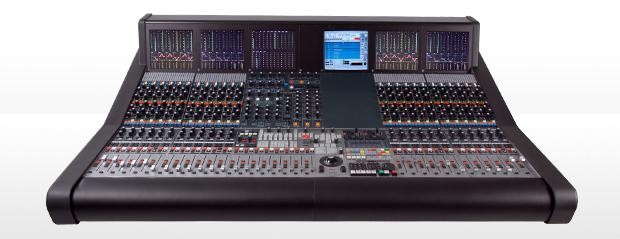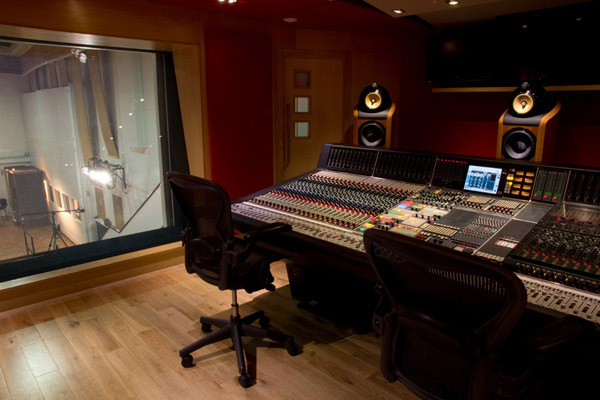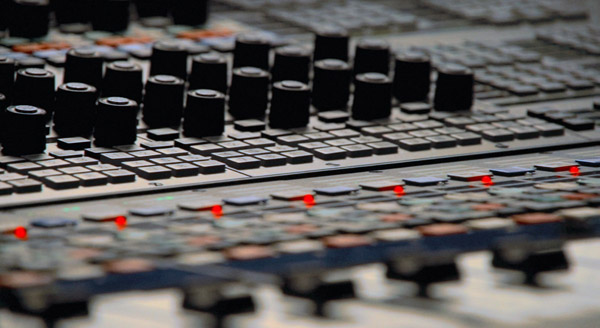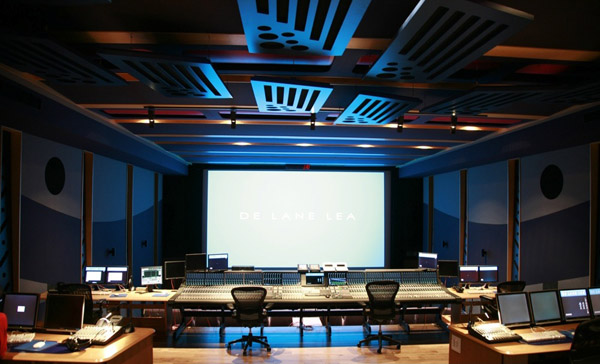IoSR Blog : 31 May 2013
So what console are you getting?
OK, no more prevaricating. Let's get onto what everyone really wants to know: what console have we chosen? The answer: an AMS-Neve 88D.

Why that one?
Let's start with the list of requirements from the last post. We want a console that:
- is a fantastic music console
- is a fantastic film/TV dubbing console
- is a fantastic DAW controller
- has very flexible surround sound panning
- is representative of commonly used music consoles
- is representative of commonly used dubbing consoles
- can interface with the Studer A80 24-track
- and can instantly recall snapshots and mixes
Instant recall
We started by looking at pretty much every console that was commercially available, both new and second hand. The criterion that limited the field the most was actually the last one: instant recall. This immediately ruled out almost every analogue console available. I realise that in this regard we're heading in a different direction from a lot of high-end music recording facilities, who use analogue consoles more often than not. If all our consoles were digital, I'd be worried about this. However, we're well equipped with other analogue consoles within our facilities, including an 8-channel Neve 'suitcase', two 24-channel DDAs, a 12-channel Neve Melbourn, and a 56-channel SSL 9000K. So there's plenty of opportunity for students to learn about the operation of analogue consoles, and the concepts of signal flow and gain structure.
So, having narrowed down the field to digital and digitally-controllable consoles, we then undertook more detailed research, had demonstrations of a few of them, and drew up our shortlist. From that, there seemed to be only one console that met nearly all of the criteria. Let's see how.
Fantastic and representative music console which can interface with the Studer A80
The 88D was developed predominantly as a music console. This means that it has many functions that you'd expect on a music console but wouldn't necessarily find on a broadcast or post-production console, such as being able to monitor the bus outputs (to make overdubbing easier and to get around the inherent latency of analogue tape machines). The language used for its various functions are also music-like as opposed to broadcast or post-production-like too, which makes translation between our consoles easier for students.
The 88D also includes the kind of monitoring and talkback facilities that are necessary for music recording but aren't normally needed for broadcast or post-production. It offers flexible EQ and dynamics processing, to the extent that each channel can be configured differently, allowing both a range of types of EQ and dynamics, as well as the possibility for multiple EQ and dynamics processes on each channel.
The 88D also provides plenty of processing capability, to enable mixing of many simultaneous tracks. AMS-Neve quantify this in terms of 'paths', and with a 500 path DSP core, we'll be able to mix hundreds of channels to stereo if we wish. It also allows the signal paths and desk routing architecture to be updated mid-session (need another aux send? easy!). The fader assignment is also highly flexible, with faders configurable in 6 banks of 4 sets of 24 faders (up to 576 if you really want to get carried away …). Finally, in terms of sound quality, Neve have a fantastic reputation, and it's also helped by being able to specify Neve's well-respected microphone pre-amplifiers.
Admittedly, there haven't been many 88D consoles sold to music studios, so it's not quite as representative as we'd like for music. However, the automation is identical across all of AMS-Neve's products. Hence, once students have learnt the automation system for the 88D, they'll be able to use the identical automation on the 88R and 88RS, which are in common use in music studios, such as Abbey Road, Air, Sphere, and British Grove in the UK (including the one below in the legendary Abbey Road Studio 2), and many more abroad.

Fantastic and representative dubbing console
Despite all the music features mentioned above, the flexible nature of the 88D means that it is still suitable for post-production. A lot of the concepts found in post-production are implemented, such as being able to mix to stems.
As before, it's not really been sold to post-production studios, but its similarity to AMS-Neve DFC Geminis means that it is suitable for training Tonmeisters for post-production. So what is common between the DFC and the 88D? Firstly, the switches, pots and control layout is similar between the two console types. This means that once you're familiar with the 88D, moving to the DFC is relatively straightforward. Secondly, the signal processing and DSP is similar, meaning that a lot of the functionality and signal path structure is identical. Thirdly, the user interface for constructing desk configurations (including the flexible processing mentioned above) is identical. Hence, once you know how to configure the signal paths on the 88D, you can do this for the DFC too.

All of this means that once the Tonmeisters know how to use the 88D, they'll be able to transfer that experience to the DFC, which is widely used in high-end dubbing theatres such as Goldcrest, De Lane Lea, Lipsync Post, Films@59, and Halo in the UK (including the one below in De Lane Lea), and many more abroad such as Warner Brothers, Disney, Fox, and Skywalker Sound.

Fantastic DAW controller
Now, this is probably the one area where the 88D didn't win out. We wanted a console that could control DAW systems such as ProTools. Inevitably, DAW manufacturers want to keep control features of their software to themselves so their own products have a competitive advantage. Third-party manufacturers such as AMS-Neve therefore need to make do with simpler protocols, such as HUI.
Using the HUI protocol limits the sophistication of the DAW control, but nevertheless it still offers a great deal of control. It is possible to map the virtual faders within the DAW to the console faders, meaning that level control is possible whilst mixing in the box. This mapping is flexible too, so DAW controller faders can be interleaved with audio channel faders, or arranged as required across the 6 banks of 4 sets of 24 faders. There are also additional controls that can be mapped to plugin functions within the DAW. Using this, parameters such as EQ and dynamics can be controlled from the 88D. The transport controls can also be operated from the console.
There are other consoles that could potentially allow control of DAWs without needing the screen, keyboard or mouse. The 88D isn't so proficient, but the amount of control offered is sufficient for the majority of our needs, which principally involves encouraging to students to use real faders in a real control room, as opposed to a mouse in their bedroom.
We also needed to consider the long-term prospects for the console. We need this console to last for 10 to 15 years. If we look back over the last 10 to 15 years consoles have changed relatively little, whilst DAWs have changed massively. In terms of a long-term investment, it seemed safer to go with a great console with reasonable DAW control, rather than a reasonable console with great DAW control.
Flexible surround sound panning
The last remaining criterion was that the console should have flexible surround panning. The 88D is the only one that we looked at that had provision for mixing to surround formats with more than 8 channels, and with panning provision for systems with loudspeakers outside a single plane (the two joysticks can be used for horizontal and vertical planes respectively). This is important to us for our research, and also to allow mixing for up-and-coming cinema formats.
Principally, this functionality has been developed for Dolby Atmos, and most Atmos releases are currently being mixed using AMS-Neve DFC Geminis, such as Star Trek Into Darkness.
Conclusion
So, after lots of consideration, we feel that the 88D is by far the best console for our needs. I realise that everyone reading this is likely to have their own favourite, and I have to admit that when we started this search I thought we'd be likely to get something else (to find out what that was, you'll have to buy me a pint). It's also clear that of the many people we talked to whilst considering this, there was little agreement about what we should get, and maybe if we were a commercial studio the decision would be different.
However, we think that the 88D is a sound investment, that will stand us in good stead for the coming years. And, by having an SSL in Studio 2 and a Neve in Studio 3, we have examples from the two most respected console manufacturers in the world. That seems highly appropriate to me.
by Russell Mason
